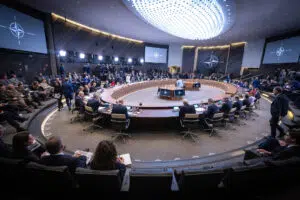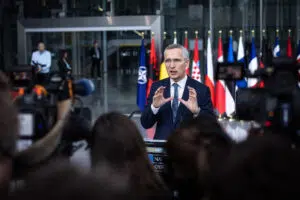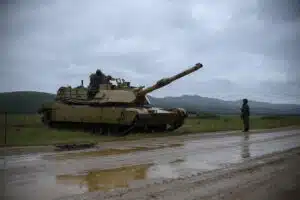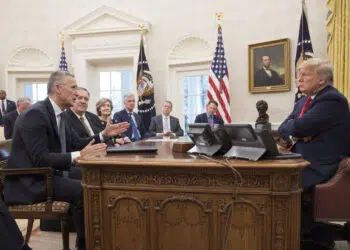Brussels – Now, it is NATO considering the creation of a fund to assist Ukraine, with an eye toward Donald Trump‘s potential election to the White House. Today’s North Atlantic Treaty Organization ministerial summit (April 3) revolved around NATO Secretary General Jens Stoltenberg‘s proposal to “transform the comprehensive assistance package to Ukraine into a multi-year assistance program,” which could reach 100 billion dollars over five years. “We need to make it more robust and predictable because we strongly believe that support to Ukraine should depend less on short-term voluntary offers and more on long-term commitments” from the 32 members of the Atlantic Alliance.

The idea of “institutionalizing more” the current support provided to Kyiv leaked yesterday afternoon (April 2) and was confirmed this morning by the Italian Foreign Minister, Antonio Tajani, in his intervention at the European Parliament before attending the NATO summit: “We will examine this idea, we have to understand well what it means in content, although we must remember that we are not at war with Russia and we will not send a single Italian solider to Ukraine.” Entering the NATO headquarters, Secretary-General Stoltenberg explained that “a stronger role for the Alliance in coordinating and providing support is the way to end this war so that Ukraine prevails,” specifying only that the idea is to “ensure greater predictability and confidence that support will come every month and every year for a long period.” In any case, “there will be no finalization during today’s and tomorrow’s meeting,” Stoltenberg clarified: “We hope to move toward consensus and to have an agreement by the NATO summit” scheduled for July 9-11 in Washington.

Secretary General Stoltenberg’s proposal (which, as Belgian Foreign Minister Hadja Lahbib disclosed, should provide for national contributions “based on the gross domestic product of the member countries” of the alliance) responds to the difficulties on the ground for the Ukrainian military, but also to a potential crisis of Western support in the future. “The situation on the battlefield is serious; we see that Russia is pushing and trying to win this war” thanks to the “fundamental” support of the Kremlin’s allies, Stoltenberg continued: “China is supporting Russia’s war economy, and in return Moscow is mortgaging its future to Beijing,” while “North Korea and Iran are providing substantial supplies of weapons and ammunition, and in return Pyongyang and Tehran are receiving Russian technologies that have helped them improve their missile and nuclear capabilities.”

However, while it is necessary to “defend a global order governed by law and not force,” the risk of Trump’s return to the White House and its impact on armed support for Ukraine must also be considered. The stalemate of the
60 billion dollars US military aid package in Congress due to Republican opposition has raised concerns among European allies about a new Trump administration’s plans to send arms to defend Kyiv against the invasion that has lasted more than two years, as well as the risks to the holding NATO’s founding principles against Russian threats. That’s why Stoltenberg’s real goal — before bidding the Atlantic Alliance a final farewell by the fall — is to secure the future of NATO’s relationship with Ukraine, starting with the resilience of the military aid inflow. Under the proposed 100-billion dollar fund, the 32 allies as a whole would take over the coordination of arms supplies to Kyiv, which is currently handled mainly by the US under the Ramstein format.







